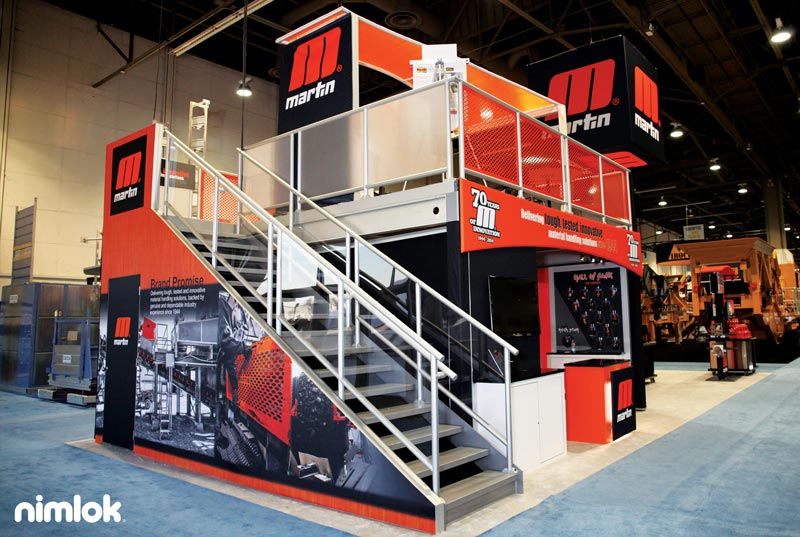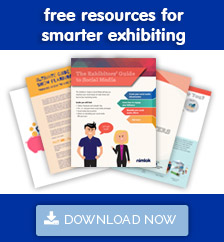 If you’ve ever exhibited at a trade show, you’re aware of the enormous time, money and effort that go into just one successful exhibit. For brands that exhibit at multiple shows a year, efficiency and versatility in displays is essential.
If you’ve ever exhibited at a trade show, you’re aware of the enormous time, money and effort that go into just one successful exhibit. For brands that exhibit at multiple shows a year, efficiency and versatility in displays is essential.
One of the best ways to get a custom looking booth for all your shows without breaking the bank is by working with a designer to develop a reconfigurable exhibit. Understanding some key design principles in the process can help you collaborate with your designer and achieve an exhibit to fit your needs.
We spoke with two of our own head designers in the US and UK to get their tips and insights on the reconfigurable exhibit design process and how to reach success. See what they had to say below…
 Dave Fugiel
Dave Fugiel
Design Director, Nimlok US
Start with layouts & orientation
Chances are your booth spaces vary from large to small throughout the year. The best reconfigurable exhibits will work to fill the needs of both. So where do designers start to achieve that? Both designers we spoke with stressed the importance of understanding space configurations during the early stages of design.
“The most important thing to keep in mind when designing reconfigurable exhibits is knowledge of layouts and orientations,” said Lewis Field, Head of Design at Nimlok Limited in the UK, “Even if spaces have not been booked, the designer needs an idea of smallest to largest configurations.”
Within the space “Think modular in design,” said Dave Fugiel, Design Director at Nimlok in the US, “The parts themselves don’t have to be modular, but design the solution to break into logical sections.”
key takeaway for exhibitors:
Come to your exhibit designer with an idea of the size range needed for your exhibit, as well as an idea of the kind of layouts you’re looking for. This will get you and your designer on the same page and help them understand your basic needs.
Evaluate the structural elements
Since multiple displays will be created from the same pool of exhibit pieces Field recommends designers and clients work together to “Decide on key features that are to be repeated at each show i.e. storage, light boxes, counters, AV etc.”
Some detail elements will remain the same in each configuration however other structural elements will need to adjust. “[The next step is to] work out which elements are scalable and which elements need to remain at a set size,” explained Field, “This enables the designer to be efficient and cost effective with the clients’ inventory.”
As Field suggests, the main key to designing a reconfigurable exhibit is building the structure using functional and collaborative exhibit pieces.
Fugiel takes a similar approach to get the most out of the design by looking for opportunities to easily reuse and replace, “The design elements I turn to most when creating reconfigurable exhibits are interchangeable modules and sections,” said Fugiel, “[they are] extremely adaptable and work well in both large and small configurations.”
key takeaway for exhibitors:
Know your basic needs and wants for each booth size and make a list of those key features. Many of those basic needs will become the starting point for the design.
Keep future updates in mind
While your needs may be concrete now, that could change down the line. Fugiel’s advice to avoid having to scrap your exhibit and start new next year? “Design so modules can be updated with new features like shelving or the ability to add monitors and new design details without a complete redesign.”
key takeaway for exhibitors:
Having options to update will allow small refreshes over time adding versatility and a longer lifespan to your existing reconfigurable exhibit.
Think ahead during the design process. During revisions ask your designer to identify areas where there are opportunities to add on or make changes in the future. If there are none, work them in to get that greater opportunity for customization over time.
Fill in the gaps with rentals
Another cost saving benefit of reconfigurable exhibits is the ability to rent out certain display pieces on a need-by-need basis.
Field often uses this technique for brands whose exhibits are mainly mid-size with just one large show a year. “I will look at making the inventory fit the majority of [mid-size] spaces and then rent elements to complete the larger show, such as a larger reception counter, rigged features or an interactive area,” said Field.
If you are interested in renting an exhibit booth, then you might be interested in checking out these custom show exhibits here.
key takeaway for exhibitors:
Don’t go in thinking you have to buy and own every part of the exhibit. If you only use the large-scale configuration once a year, look for those opportunities to rent like Field mentioned above. Additionally, let your designer know you’re open to renting a trade show display. Doing so could open up your budget elsewhere in the design.
Don’t forget packing & crating
Why is packing important? Ideally you’ll be using different parts of the whole exhibit depending on the show. You want all those pieces to fit together and ship well for every configuration.
“[I] pack module sections, such as every 10’ of linear display into individual crates to keep everything well organized,” said Fugiel, “A great design isn’t just how it looks, it’s how it assembles and packs as well.”
key takeaway for exhibitors:
Communicate to your designer that crating is important to you. Work together to establish the best way to pack and store the entire exhibit, as well as the best way to organize each configuration for shipping.
Reconfigurable exhibits require more strategic design skills, but pay off big in the end. We hope some insights from our designers will help you confidently collaborate with your own designer on a reconfigurable exhibit should you need it.


